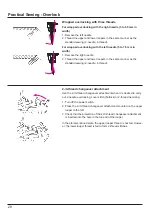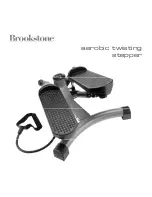
15
Adjustments and settings
Differential feed
There are two feed dogs one front (
C
) and one rear (
D
). The two feed dogs
move independently and the distance each feed dog travels during one
complete movement can be adjusted. The differential feed prevents fluting
or waving in knitted or stretch fabrics and movements between the layers of
fabric. It also ensures pucker-free seams in smooth fabric such as nylon or
closely woven fabric.
Perfectly flat seams in knits or stretch fabrics.
The distance travelled by the front feed dog should be greater than that of
the rear feed dog. The front feed dog, therefore, feeds an amount of fabric
which the rear feed dog can take up behind the needle without stretching
the fabric. (
E
)
Pucker - free seams in nylon or closely woven fabrics.
The distance travelled by the rear feed dog should be greater than that of
the front feed dog. The front feed dog, therefore, holds the fabric back so
that the rear feed dog can take it up behind the needle without any pucker-
ing. (
F
)
Adjusting the differential feed
The differential feed can be adjusted by simply turning the differential feed
adjustment dial in the direction desired. Always make a trial run. The differential
feed is infinitely variable and can be adjusted while sewing.
Adjusting the differential feed
Simply turn the dial in the direction desired for fully variable adjustment
while sewing. Test sew.
G
H
J
I
Effect
Fabric
2
Wave-free seams (G) Thick wool knits, hand knitted articles, very
stretchy fabrics
1.5 Wave-free seams (H) Cotton, silk, synthetic jersey, sweatshirt fabrics
and fine knits
N Normal feed (I)
Woven fabrics
0.7 No puckering (J)
Fine nylon jersey, closely woven fabrics, lining
fabric satin, poplin
2
1.5
N(1)
0.7
E
F
D
C
Summary of Contents for MO-2800
Page 39: ......
















































